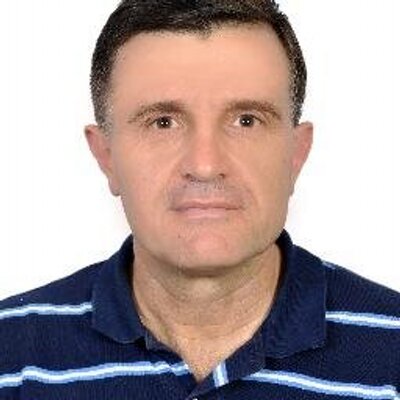Palestinian sports movement is unique in the modern age because no other people have experienced catastrophes displacement or dispersal as the Palestinians have. During the years before 1948 this movement was marked by its opposition to Zionism and during the decades that followed it sought to emphasize the Palestinian national identity as well as by its dispersion due to the dispersal of Palestinians into the Shitat (diaspora).
Edward Said wrote in The Question of Palestine:
“Behind every Palestinian there is a great general fact: that he once – and not so long ago – lived in a land his own called Palestine which no longer his homeland.”
Palestinians lived a dignified life on their land. They had their own schools associations clubs sports they practiced and sporting events they held with their brothers in neighboring Arab nations. By 1948 there were some 65 athletic clubs in Palestine; approximately 55 of them were members of the (Arab) Palestine Sports Federation PSF which was established in 1931 and re-established in 1944.
Palestinian sports before the Nakba (catastrophe of 1948) reached a reasonable level of growth especially after the re-establishment of the PSF. Also the periods 1930s and 1940s generated quite a good number of football players boxers wrestlers and weightlifters who competed with their counterparts in Arab countries especially Egypt which compared to other Arab countries had a prominent athletic prestige.
During the 1948 War athletes coaches and administrators were dispersed. There were many who evacuated to Gaza Sector and settled there. They made great contributions to the growth of sports. Palestine’s delegation to the Pan Arab Games that began in 1953 was accompanied by administrators from Gaza such as Subhi Farah Zaki Khayyal Elias Manneh and others.
Also Palestinians brought their athletic skills and experience with them to the Shataat. Sports like football became a symbol of childhood and home in refugee camps’ narrow alleyways despite the hardships the Palestinians faced.
The main obstacle to Palestinian sports has been and still is the absence of an independent state. For any sporting movement to succeed independence and stability are essential elements. Palestine’s sports movement was experiencing dispersion and divergence at a time when most movements in the Arab world and internationally were experiencing stability. The Oslo Agreement also has its negative consequences in this regard.
In 1969 the PLO decreed the establishment of the Supreme Council for Youth Welfare in Jordan then it was transferred to Lebanon. The name was changed in 1974 to Supreme Council for Youth and Sports SCYS. Later SCYS coordinated with its branches in Syria Iraq Kuwait and Saudi Arabia.
In 1974 Palestinians in Syria decided to form the Palestine Sports Federation to avoid the complexity of coordination. Probably Palestinian sports leaders in Syria wanted a degree of autonomy in managing and organizing their sports activities.
Palestine’s sports movement was dispersed in several ways: first its center of gravity transferred from Jaffa to Gaza (1948 – 1967) to Jordan Lebanon Damascus Tunisia Gaza (after the formation of the Palestinian Authority) ending in Ramallah. Consequently this movement’s headquarters moved eight times over six decades.
Second dispersal of athletic federations’ headquarters. As an example the headquarters of the handball federation used to be in Kuwait until 1979 when it was dissolved and moved to Syria and then it was moved back to Kuwait with a new board committee. According to the Executive Office of the Supreme Council of Youth and Sports in 1978 the Basketball Association was established by Dr. George Rishmawi honorary president with Gaza as its center and then it moved to Damascus under the leadership of Farouk Othman (Syria).
In another case a federation’s headquarters was in one country and its president is in another such as the Palestine Weightlifting Federation which had its headquarters in Lebanon and its president in Libya.
Third dispersion of the athletes. Palestinian national teams had players from several Shitat countries. For instance in 1965 athletes from Egypt Syria Jordan Lebanon and Iraq represented the Palestinian delegation at the Pan Arab Games in Cairo in 1965. This was the case for all the competitions where Palestinian delegations competed. The delegation of Palestine to the 1986 Chess Olympiad in Dubai included an administrator and a player Alaa Moussa (who resided in Lebanon) Hanna Boja (who resided in Honduras) Riyad Abu Shamala and Nazih Qassem who resided in Kuwait.
Despite the dispersion Palestinian sports prior to Oslo Agreement was more democratic and integrated than today. The PLO included all Palestinians and their sports movement within its fold while the Oslo Agreement weakened the ties between Palestinians widened the distance between them. Palestinian refugees especially those displaced in 1948 felt marginalized on many levels including sports.
By concentrating all activities (including sports) on the West Bank the Palestine Liberation Organization declined and was replaced by the Palestinian Authority.
In Ramallah the Palestinian Football Association and Palestine Olympic Committee concentrate their efforts primarily on the West Bank. Another Palestine Football Association has been formed in Lebanon. However these two associations (in Ramallah and Lebanon) are clearly not in coordination.
Comparing the situations before and after the Oslo Agreement one can readily see the growing gap between Gaza and the West Bank due to the barriers that the occupation erected. Many Gaza players have been denied permits to travel through Israel and into the West Bank to play in a local championship final against rival Palestinian clubs and to be part of the Palestinian flagship team.
The West Bank was torn apart because of settlements checkpoints and the separation wall. This created a new burden for administrators and athletes. Previously one would have to travel about 20-25 minutes from Ramallah to Bethlehem to attend a match but now it takes about one hour.
Additionally Jerusalem’s isolation was a major concern since Israeli policy is intended to Judaize it and change its Arab features. Israel has put pressure on its clubs sporting events players’ movement to and from the West Bank and on its clubs’ coordination with athletic federations and institutions in the West Bank.
Sports too suffered from the conflict between Fatah and Hamas which was the greatest internal Palestinian issue. As a result of this conflict sports were not only dispersed but also weakened. In the West Bank athletes and clubs affiliated with Hamas were discriminated against while those affiliated with Fatah in Gaza were discriminated against too.
– Issam Khalidi is an independent scholar is the author of History of Sports in Palestine 1900-1948 (in Arabic) One Hundred Years of Football in Palestine (in Arabic and English) co-edited Soccer in the Middle East as well as articles and essays on the subject of sports included at www.hpalestinesports.net. He contributed this article to The Palestine Chronicle.










